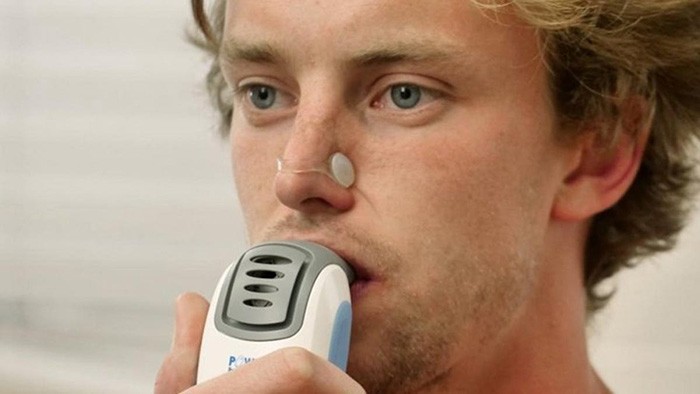High-Resistance Inspiratory Muscle Strength Training (IMST), a breathing exercise developed in the 1980s to help critically ill respiratory disease patients strengthen their diaphragm and other breathing muscles, is making a comeback.
New research has found that the exercise, often described as ‘strength training for breathing muscles’, could play a key role in helping aging adults fend off cardiovascular disease. Researchers at the University of Colorado in the US have found that working out just five minutes daily on IMST lowers blood pressure and improves other measures of vascular health, often even more than aerobic exercise or medication.
The study is the strongest evidence yet that the ultra-time-efficient IMST maneuver is an efficient and effective lifestyle strategy that besides improving health of respiratory ill patients can also help maintain cardiovascular health in the aged.
Though nearly two-third of people over the age of 50 in many countries have been found to have above-normal blood pressure, yet fewer than 40 percent meet recommended aerobic exercise guidelines. Despite this reluctance putting them at greater risk of suffering a heart attack or stroke, many people avoid a regular aerobic exercise regimen for several reasons. Aging people often find that these exercises take up too much time and effort, or in some cases it can be expensive and difficult for people to easily access.
The revived IMST technique involves inhaling vigorously through a hand-held device which provides resistance. Think of it as attempting to suck hard through a tube that also sucks back at the same time. Initially, when prescribing it for breathing disorders, doctors had recommended a 30-minute-per-day regimen at low resistance.
But researchers behind the new study say that a more time-efficient protocol — 30 inhalations per day at high resistance, six days per week — could also reap cardiovascular, cognitive and sports performance improvements.
For their study, the university team recruited 36 otherwise healthy adults ages 50 to 79 with above normal systolic blood pressure (120 millimeters of mercury or higher). Half did High-Resistance IMST for six weeks and half did a placebo protocol in which the resistance was much lower.
After six weeks, the IMST group saw their systolic blood pressure (the top number) dip nine points on average, a reduction which generally exceeds that achieved by walking 30 minutes a day five days a week.
That decline is also equal to the effects of some blood pressure-lowering drug regimens. What was even more remarkable was that even six weeks from quitting the IMST workout, the IMST group maintained most of that improvement. Also, surprisingly, those in the IMST group completed 95 percent of the sessions without anyone opting to dropout.
The treatment group also saw a 45 percent improvement in vascular endothelial function, or the ability for arteries to expand upon stimulation, and a significant increase in levels of nitric oxide, a molecule that is critical for dilating arteries and preventing plaque buildup. Nitric oxide levels naturally decline with age.
In addition, markers of inflammation and oxidative stress, which can also boost heart attack risk, were significantly lower after people did IMST.

